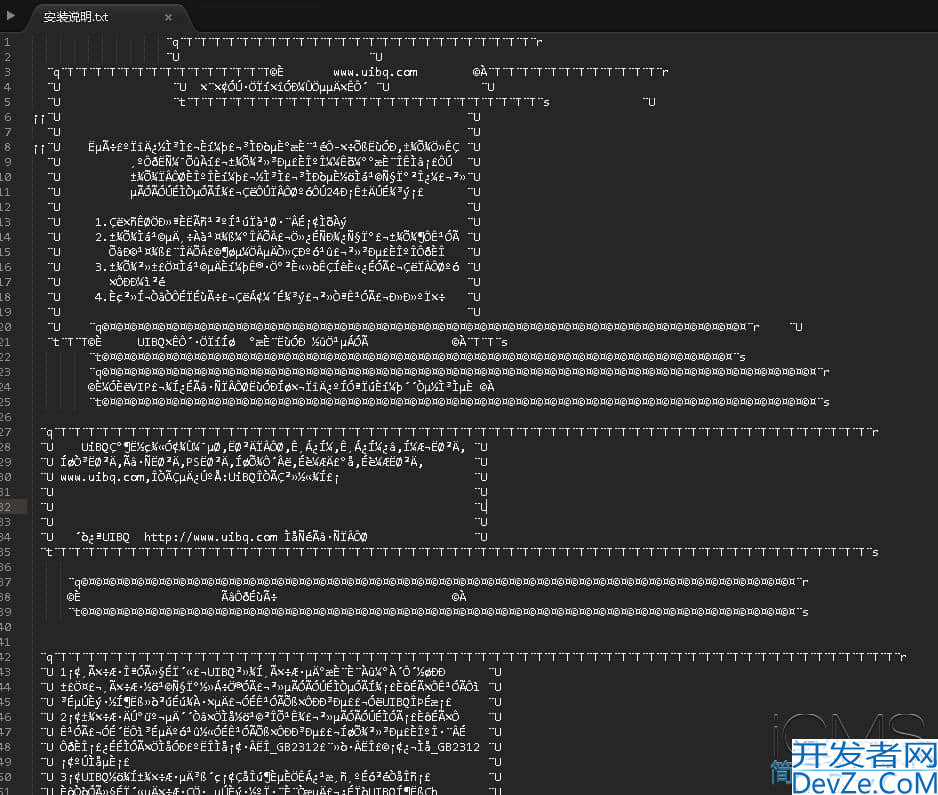从基础到实战详解SpringBoot获取资源文件全指南
目录
- 一、SpringBoot 资源文件的存放位置
- 二、获取资源文件的核心方法
- 1. 基于 ClassLoader 的资源获取
- 2. 基于 Class 的资源获取
- 3. 基于 Spring 的 ResourceLoader 工具类
- 4. 基于 @Value 注解的配置文件读取
- 三、常见问题与解决方案
- 1. 资源文件打包后找不到
- 2. 读取 JAR 包内资源时无法通过 File 访问
- 3. 多模块项目中资源文件如何共享
- 四、最佳实践总结
在 SpringBoot 开发中,我们经常需要访问各类资源文件——配置文件、模板、静态资源等。不同于传统 Java 项目,SpringBoot 有其独特的资源管理机制,掌握正确的资源获取方式能避免很多"文件找不到"的坑。本文将系统讲解 SpringBoot 中资源文件的存放规则、获取方法及实战技巧。
一、SpringBoot 资源文件的存放位置
SpringBoot 对资源文件有约定俗成的存放规范,遵循这些规范能让资源访问更简单。默认的资源目录为 src/main/resources,其下常见子目录及用途如下:
| 目录路径 | 用途说明 | 典型文件示例 |
|---|---|---|
| resources/ | 根目录,可存放通用配置文件 | app.properties、logo.png |
| resources/config/ | 配置文件目录,优先级高于根目录 | application-dev.yml |
| resources/static/ | 静态资源目录(Web 项目) | js/、css/、images/ |
| resources/templates/ | 模板文件目录(如 Thymeleaf、Freemarker) | index.html、report.ftl |
| resources/i18n/ | 国际化资源文件目录 | messages_zh_CN.properties |
关键特性:
- 这些目录会被自动加入类路径(classpath),无需手动配置
- 打包后(JAR 包),资源文件会被放在 JAR 内部的根目录或对应子目录中
二、获取资源文件的核心方法
SpringBoot 继承了 Java 的资源访问机制,并提供了更便捷的工具类。以下是常用的 4 种获取方式,适用于不同场景。
1. 基于 ClassLoader 的资源获取
原理:通过类加载器(ClassLoader)从类路径根目录查找资源,路径无需以 / 开头。
适用场景:资源文件放在 resources/ 根目录或子目录(如 config/、static/)。
示例代码:
import org.springframework.stereotype.Component;
import java.io.InputStream;
@Component
public class ResourceLoaderService {
// 读取 resources/config/app.properties
public void loadByClassLoader() {
// 获取类加载器
ClassLoader classLoader = getClass().getClassLoader();
// 读取资源(路径从类路径根开始,无需加 /)
try (InputStream is = classLoader.getResourceAsStream("config/app.properties")) {
if (is != null) {
js // 读取文件内容(示例:转为字符串)
byte[] buffer = new byte[is.available()];
is.read(buffer);
String content = new String(buffer);
System.out.println("配置内容:" + content);
} else {
System.out.println("资源文件不存在编程客栈");
}
} catch (Exception e) {
e.printStackTrace();
}
}
}
2. 基于 Class 的资源获取
原理:通过当前类的 Class 对象获取资源,路径可相对当前类的包路径,或通过 / 开头表示类路径根。
适用场景:资源与当前类在同一包下,或需要明确相对路径时。
示例代码:
@Component
public class ResourceClassService {
// 当前类位于 com.example.service 包
// 资源文件位置:com/example/service/data.txt(与类同包)
public void loadByClassRelative() {
try (InputStream is = getClass().getResourceAsStream("data.txt")) {
// 读取逻辑...
} catch (Exception e) {
e.printStackTrace();
}
}
// 资源文件位置:resources/static/images/logo.png(类路径根下)
public void loadByClassRoot() {
// 路径以 / 开头,从类路径根开始查找
try (InputStream is = getClass().getResourceAsStream("/static/images/logo.png")) {
// 读取逻辑...
} catch (Exception e) {
e.printStackTrace();
}
}
}
注意:
- 不带
/的路径:相对当前类所在包(如data.txt对应com/example/service/data.txt) - 带
/的路径:相对类路径根(如/static/logo.png对应resources/static/logo.png)
3. 基于 Spring 的 ResourceLoader 工具类
原理:Spring 提供的 ResourceLoader 接口,统一资源访问抽象,支持多种资源类型(classpath、file、URL 等)。
适用场景:Spring 环境中推荐使用,支持更丰富的路径表达式(如 classpath*: 匹配多个资源)。
示例代码:
import org.springframework.core.io.Resource;
import org.springframework.core.io.ResourceLoader;
import org.springframework.stereotype.Component;
import javax.annotation.Resource;
import java.io.InputStream;
@Component
public class SpringResourceService {
@Resource
private ResourceLoader resourceLoader;
// 读取单个资源
public void loadSingleResource() {
try {
// 加载类路径下的 templates/report.xlsx
Resource resource = resourceLoader.getResource("classpath:templates/report.xlsx");
VoOGI if (resource.exists()) {
try (InputStream is = resource.getInputStream()) {
// 读取逻辑...
}
}
} catch (Exception e) {
e.printStackTrace();
}
}
// 读取多个资源(classpath*: 匹配所有符合条件的资源)
public void loadMultipleResources() {
try {
// 加载所有 JAR 包中 META-INF/spring.factories 文件
Resource[] resources = resourceLoader.getResources("classpath*:META-INF/sprwww.devze.coming.factories");
for (Resource res : resources) {
System.out.println("找到资源:" + res.getFilename());
}
} catch (Exception e) {
e.printStackTrace();
}
}
}
特殊路径表达式:
classpath:xxx:从类路径查找单个资源classpath*:xxx:从类路径查找所有匹配的资源(包括 JAR 包内)file:xxx:从本地文件系统查找(绝对路径或相对当前项目根目录)
4. 基于 @Value 注解的配置文件读取
原理:通过 Spring 的 @Value 注解直接注入配置文件中的属性值,无需手动读取文件。
适用场景:仅需获取配置文件(如 application.yml、custom.properties)中的特定属性。
示例代码:
1.资源文件 resources/config/custom.properties:
app.name=SpringBoot资源示例 app.version=1.0.0 app.enabled=true
2.注入配置的代码:
import org.springframework.beans.factory.annotation.Value;
import org.springframework.stereotype.Component;
@Component
public class ConfigPropertiesService {
// 注入配置值(默认从 application.properties/yml 读取,可指定其他文件)
@Value("${app.name:默认名称}") // 冒号后为默认值
private String appName;
@Value("${app.version}")
private String appVersion;
@Value("${app.enabled}")
private boolean enabled;
// 如需读取其他配置文件,需在启动类添加 @PropertySource 注解
// @PropertySource("classpath:config/custom.properties")
public void printConfig() {
System.out.println("应用名称:" + appName);
System.out.println("版本号:" + appVersion);
System.out.println("是否启用:" + enabled);
}
}
注意:
- 需在启动类添加
@PropertySource("classpath:config/custom.properties")才能识别非默认配置文件 - 支持 SpEL 表达式,如
@Value("#{T(java.lang.Integer).parseInt('${app.port:8080}')}")
三、常见问题与解决方案
1. 资源文件打包后找不到
原因:
- 资源文件未放在
src/main/resources目录,导致未被打包进 JAR - 使用绝对路径(如
D:/file.txt),但部署环境中路径不存在
解决:
- 确保资源放在标准目录下,通过
classpath:路径访问 - 打包后通过
Resource.exists()检查资源是否存在
// 检查资源是否存在
Resource resource = resourceLoader.getResource("classpath:config/app.properties");
if (!resource.exists()) {
throw new RuntimeException("资源文件不存在:" + resource.getDescription());
}
2. 读取 JAR 包内资源时无法通过 File 访问
原因:JAR 包内的资源是压缩文件中的条目,并非本地文件系统的真实文件,无法通过 new File(...) 访问。
解决:
- 必须通过输入流(
InputStream)读取,而非File对象 - 如需临时文件,可将资源复制到系统临时目录:
import org.springframework.core.io.Resource;
import java.io.File;http://www.devze.com
import java.nio.file.Files;
public void copyResourceToTempFile(Resource resource) throws Exception {
File tempFile = File.createTempFile("temp", ".txt");
Files.copy(resource.getInputStream(), tempFile.toPath());
System.out.println("临时文件路径:" + tempFile.getAbsolutePath());
}
3. 多模块项目中资源文件如何共享
场景:在 Maven 多模块项目中,A 模块需要访问 B 模块的资源文件。
解决:
- 将共享资源放在公共模块(如
common模块)的src/main/resources下 - 通过
classpath*:路径匹配所有模块的资源:
// 读取所有模块中 META-INF/shared.properties 文件
Resource[] resources = resourceLoader.getResources("classpath*:META-INF/shared.properties");
四、最佳实践总结
优先使用 Spring 提供的工具:ResourceLoader 和 @Value 是 Spring 环境的最佳选择,适配各种部署场景(JAR、WAR、容器化)。
避免硬编码路径:通过配置文件(如 application.yml)定义资源路径,方便后期修改:
resource: template-path: classpath:templates/report.xlsx
代码中注入路径后再加载:
@Value("${resource.template-path}")
private String templatePath;
public void loadTemplate() {
Resource resource = resourceLoader.getResource(templatePath);
}
区分开发与生产环境:开发时可通过 file: 路径访问本地文件(方便调试),生产环境切换为 classpath: 路径:
// 开发环境:file:src/main/resources/test.txt
// 生产环境:classpath:test.txt
@Value("${app.resource-path:classpath:test.txt}")
private String resourcePath;
处理大文件:对于超过 100MB 的资源文件,建议通过 Resource.getInputStream() 流式读取,避免一次性加载到内存。
掌握这些方法后,无论资源文件是在本地开发目录、JAR 包内,还是分布式环境中,都能轻松获取。SpringBoot 的资源管理机制看似复杂,实则遵循"约定优于配置"的原则,理解其底层逻辑后,就能举一反三应对各种场景。







 加载中,请稍侯......
加载中,请稍侯......
精彩评论